交互式创建和管理分配
此示例展示了如何在模型画布上交互式地创建和管理 System Composer™ 分配,并使用分配编辑器。
在系统工程中,架构系统通常在不同层次上进行描述。功能架构 [1] 描述了系统的高度函数。逻辑架构 [2] 描述了系统的逻辑组件以及它们之间如何交换数据。您可以使用分配来建立从功能组件到逻辑组件的关系,并指示部署策略。
分配建立从一个模型中的架构元素(组件、端口和连接器)到另一个模型中的架构元素的有向关系。通过基于资源的分配,您可以将功能架构元素分配给逻辑架构元素,以及将逻辑架构元素分配给物理架构元素。
分配方案包含源模型和目标模型之间的一组分配关系。在分配方案中的模型元素之间进行分配。默认分配方案称为
Scenario 1。分配集由一个或多个分配方案组成,这些分配方案描述源模型和目标模型之间的各种分配关系。在分配编辑器中创建包含分配方案的分配集。分配集保存为 MLDATX 文件。
要程序化地创建分配,请参阅程序化创建和管理分配。
提示
要了解更多关于 System Composer 概念在系统工程设计中的应用,请参阅System Composer 概念。
使用轮胎压力监测系统交互式创建和管理分配
此示例使用轮胎压力监测系统 (TPMS) 工程。要打开工程,请使用此命令。
openProject("scExampleTirePressureMonitorSystem");在两个模型之间创建分配
您可以在 TPMS 的功能架构和逻辑架构之间创建分配,以表示组件、端口和连接器之间的有向关系。
1.打开功能架构模型,这是分配的源模型。
systemcomposer.openModel("TPMS_FunctionalArchitecture");2.要为这些模型创建分配集,请从工具栏中导航至建模 > 分配编辑器,然后启动分配编辑器。
分配编辑器有三个部分:工具条、浏览器窗格和分配矩阵。
使用工具栏创建和管理分配集。
使用分配集浏览器窗格浏览和打开现有的分配集。
使用分配矩阵指定第一列中的源模型元素与第一行中的目标模型元素之间的分配。您可以通过编程或双击矩阵中的单元格来创建分配。
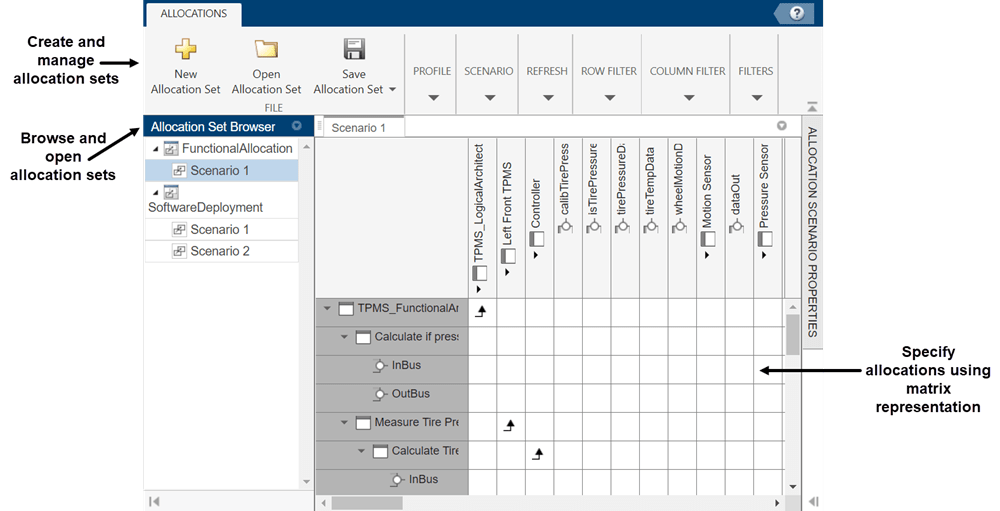
3.点击新建分配集在两个模型之间创建一个新的分配集,并设置名称。在此示例中,TPMS_FunctionalArchitecture.slx 是源模型,TPMS_LogicalArchitecture.slx 是目标模型。
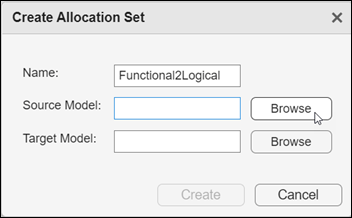
4.要从源模型到目标模型创建两个相同类型的元素之间的分配,请双击分配矩阵中的相应单元格。双击源模型上的 Report Low Tire Pressure 组件和目标模型上的 TPMS Reporting System 组件的单元格。

5.要显示源模型 TPMS_FunctionalArchitecture 的模型元素上的分配,在工具条上,导航到建模 > 分配编辑器 > 显示分配。选择 Report Low Tire Pressure 源组件,然后点击分配给符号。您将看到目标组件的完整路径。

6.点击目标组件,在目标模型上导航到该组件。
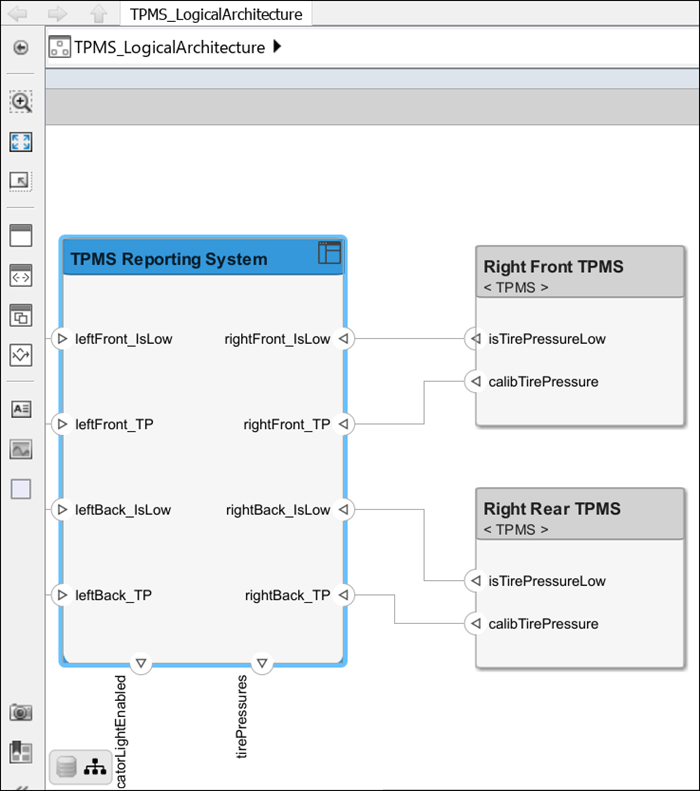
7.返回源模型 TPMS_FunctionalArchitecture,并从模型元素创建一个新的分配。右键点击 Calculate if pressure is low 组件,从工具提示中选择 Allocations,然后选择 Select as allocation source。
8.在目标模型 TPMS_LogicalArchitecture 上,右键点击组件 TPMS Reporting System,从工具提示中选择 Allocations。然后,选择 Allocate to selected element。选择活跃的分配场景。
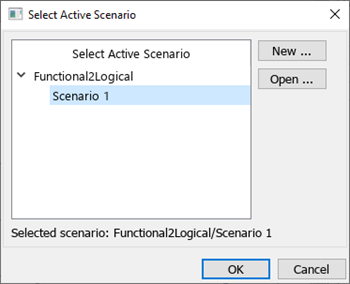
9.要显示目标模型 TPMS_LogicalArchitecture 的模型元素上的分配,在工具栏上,导航到建模 > 分配编辑器 > 显示分配。点击 TPMS Reporting System 组件上的分配源符号,查看两个分配源组件的完整路径。点击任一组件上的 ![]() 图标,即可删除分配并取消分配组件。点击
图标,即可删除分配并取消分配组件。点击 Confirm delete 以继续删除。

为分配指定构造型
分配的构造型捕获模型元素之间的关系元数据,以从一个环境映射到另一个环境。
1.从分配编辑器中打开配置文件编辑器。在配置文件中创建一个名为 FunctionalAllocation 的构造型,用于分配。然后,定义一个名为 IsImplemented 的属性,类型为 boolean。

2.返回至分配编辑器,并选择 FunctionalAllocation 分配集。点击 ![]() 按钮,在分配集属性选项卡中导入
按钮,在分配集属性选项卡中导入 TPMSProfile 配置文件。
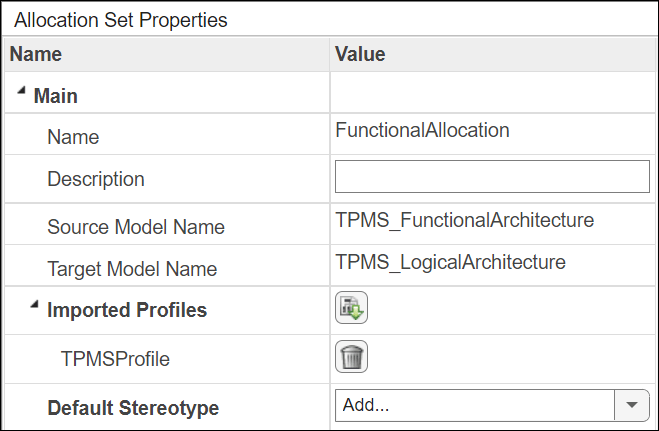
3.点击 Scenario 1 分配集上的 FunctionalAllocation。选择一个分配。从分配属性选项卡中,选择 FunctionalAllocation 构造型。
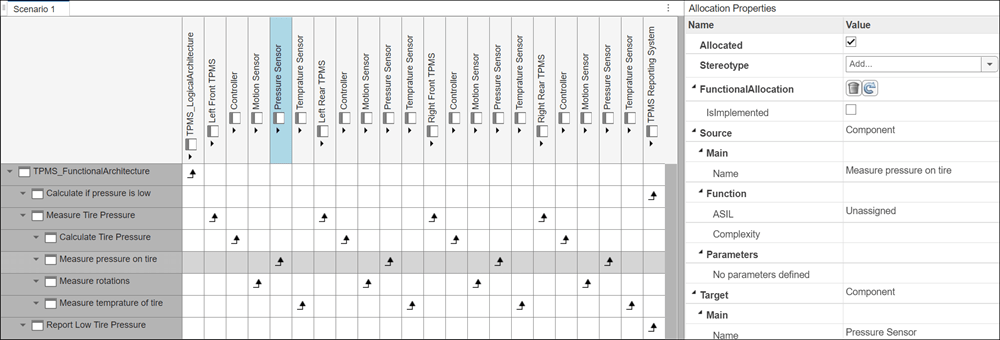
现在,您可以检查 IsImplemented 属性,以表明已实现函数到逻辑分配。属性表示源模型与目标模型之间的有向关系,并扩展了架构建模语言。
参考
[1] Carter, Jeffrey. “Functional Architecture.” Guide to the Systems Engineering Body of Knowledge (SEBoK) v. 2.7, released October 31, 2022. https://sebokwiki.org/wiki/Functional_Architecture.
[2] Faisandier, Alan, Garry Roedler, and Rick Adcock. “Logical Architecture.” Guide to the Systems Engineering Body of Knowledge (SEBoK) v. 2.7, released October 31, 2022. https://sebokwiki.org/wiki/Logical_Architecture.
另请参阅
对象
systemcomposer.allocation.AllocationScenario|systemcomposer.allocation.AllocationSet|systemcomposer.allocation.Allocation